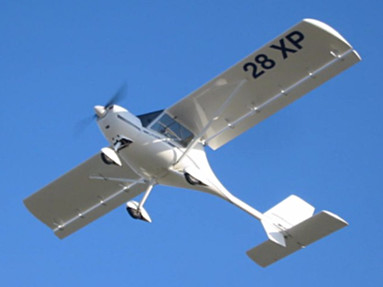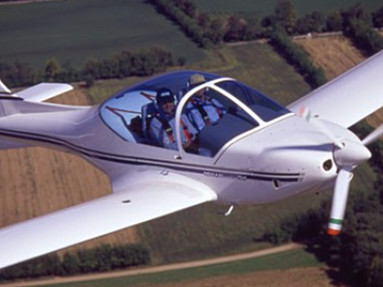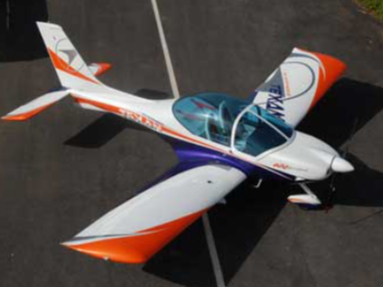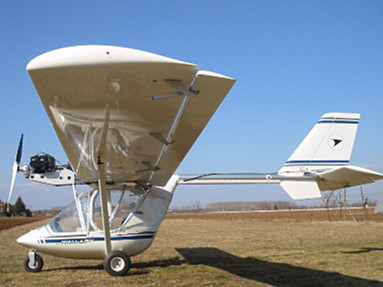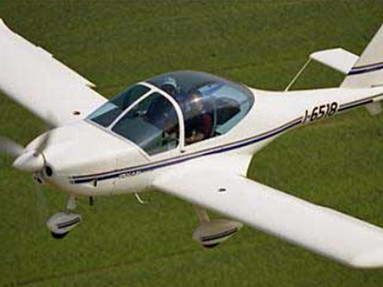
The Texan is a two seat ultra-light planet As a true three-axis low wing aircraft. it has been designed to get maximum performance when compared to the more traditional aircraft designs. With its high aerodynamic efficiency the Texan is a master at short take-off and landing runs, rapid climbs and fast cruises with modest fuel consumptions. A unique feature of the Texan design is the elevated level of flight comfort for the pilot and passenger alike. With excellent views, extra cabin space and the very low noise level inside the cock-pit, occupants can now enjoy comforts usually found only in commercial aircraft.
To strengthen the high value of this project, the aircraft is also very easy to fly. with optimum control even at low speed. Our engineers have designed the Texan to give the owner a durable and low maintenance plane for the life of the aircraft. When it comes to crash safety, the Texan has a re-enforced structure ensuring the strongest possible fuselage. The windshield also has a roll over protection bar, further increasing occupant safety.
The wing is of the rectangular type, utilizing a dihedral angle. Wing profile is laminar and features separate flaps that work independently to the ailerons. Both flaps and ailerons are integrated into the profile of the wing. This configuration allows a wide range of low resistance control due to the wake of the airflow permitted by the utilization of the both these features. Each half-wing is constructed using high tech composite materials. in fact the internal wing structure is made with carbon fiber resin and honeycomb sheets with the advantages being reliability, structural strength and lightness The ailerons and the flaps are of the fully composite type. The linkages and their relative hinges are fixed directly to the fiber matrix. Every aileron is hinged on a support fixed to the wing and the movement is directly braked and balanced by counterweights that also prevent the primer fluttering.
The fuselage is integrally constructed in carbon fibers and honeycomb. Five rims further strengthen the self-supporting structure. The rims guarantee the rigidity of the fuselage system. This main rim crosses the whole cabin and supports the tail boom and all the forces acting on it. The front zone of the fuselage is delimited by the firewall, made from high temperature resistant fiber the firewall is made very strong to accommodate the engine mounts and associated bolts. The root of the cockpit is completely free and is closed by a Plexiglas canopy that is opened and closed by sliding back and forth. The fuselage supporting the landing gear frame is specially strengthened to absorb vibrations, shocks and bumps that may be experienced during rough take offs and landings.
The two seats are made from a composite matrix structure. Fastened directly to the fuselage frame through screws, each seat is adjustable and upholstered in a soft fabric material or optionally available in alcantara®. Both safety seat belts are securely fastened directly to the structure of the fuselage through bolts.
The landing gear is of the fixed tricycle type. The main gear has been fixed to the fuselage through a support frame embracing the welded steel pipes and associated fixing bolts. Every leg is built in aluminum alloy. type Ergal 7075. This material enables good flexibility and strength into each leg. It also functions by shock-absorbing during take-off and landing. The two wheels of the main gear are made from aluminum alloy of the separable split-rim type. Each wheel comes with sealed bearings and tires with air chamber. The brakes are the disk type with hydraulic command in the cockpit. The front gear is fixed to the lower fuselage frame It is composed from an aluminum wheel fork fixed on an oledynamic coaxial shock absorber. The front wheel is directional, with steering achieved by the rudder pedals. The wheel is from a nylon separable split-rim type, with sealed bearings and tire with air chamber. The aircraft is governable around three axes via the ailerons, the elevators and the rudder. Control of the ailerons, is opportunely designed to allow the differential command via the use of hinges with spherical ends that synchronizes the whole cinematic command thus ensuring a low friction and precise movement The elevator is provided with an automatic anti-servo tab that can be controlled by the trim on pitch axis.
The flaps are situated in the nearest part of the root of the wing. These are operated through an electric servo actuator and they are also provided with an indicator, positioned on the instrument panel that shows the angle of deflection measured in degrees.
Every aircraft is supplied with the followings instruments for flight assistance and far engine control: airspeed indicator, turn coordination indic. (ball), pressure altimeter, rate of climb indic.. magnetic compass, engine revolution per minute indic., flaps angle indic., two fuel level indic. [televel] and two low fuel level lamps, engine oil pressure indie, fuel pressure indic, engine oil temperature indic. engine head cylinders temperature indic. engine run time indic, exhausts temperature indic. For Texan Top Class 80 HP [Jabiru engine] add the carburetor inlet air temperature indicator. Other instruments are available as optional.
Text and photo from: http://www.flysynthesis.com
